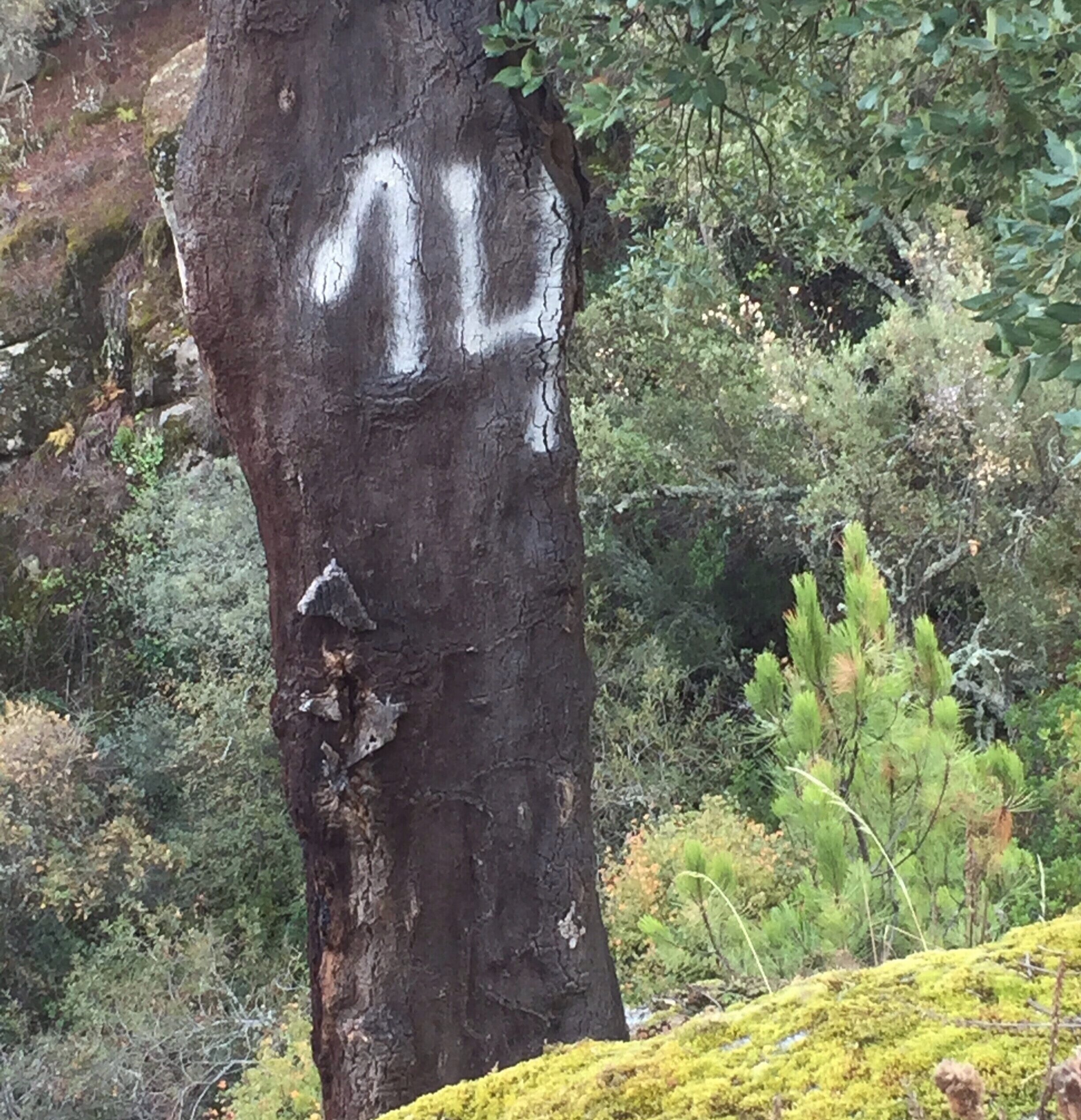Hiking around our quinta we pass cork trees, some with large painted numbers on the bark – what’s that all about? The number is the year that the outer layer of bark was harvested.
Here you see the 2 bark layers, the red-brown under-layer and the lighter more “cork-like” outer-layer. The outer layer is harveted every 9 years - sustainability at its best!
Cork is a sustainable product - it is actually the outer layer of bark of the quercus suber, the cork oak. This oak variety has a unique “extra” - 2 layers of bark. With a life span of up to 270 years and taking about 25 years to mature, the harvest takes place every 9 years - around 20 cork harvests in the tree’s life!
Strictly controlled by the Portuguese government, permission is given via the Ministry of Agriculture to harvest the outer layer of bark per tree, and it is manually done. The tiradors, who strip off the outer layer of bark by hand with an axe, separate the 1st layer from the 2nd layer of bark, or cork. High on my bucket list is to see this done one day. I hope you enjoyed the short and fascinating video of men stripping the tree.
How many Quinta do Tedo cork wine stoppers are popped a year?
Portugal is the world’s biggest cork producer, accounting for more than 50% of the world’s cork supply. 70% of all cork produced in Portugal is used to make wine bottle stoppers, that amounts to about 40 million wine bottle stoppers a day! Other uses include shoe soles, mouse pads, clothes, building materials and insulation, and even the inside of base balls! For those who have recently visited Portugal – the country is on a creative role with new ways to use cork!
Cork lady bug, anyone?
On a final note and for a fun chuckle, here are 2 short videos from 2010 (thank you Britt Karlsson from BKWine Tours) from the company Jaimeleliege (translated “I love cork”), showing how cork is stripped with great humor!
Which version do you prefer?
Thank you to https://www.portugalist.com/portuguese-cork-guide/ for excellent facts about cork, to jaimeleleige.com and to Corte da Cortiça videos.





